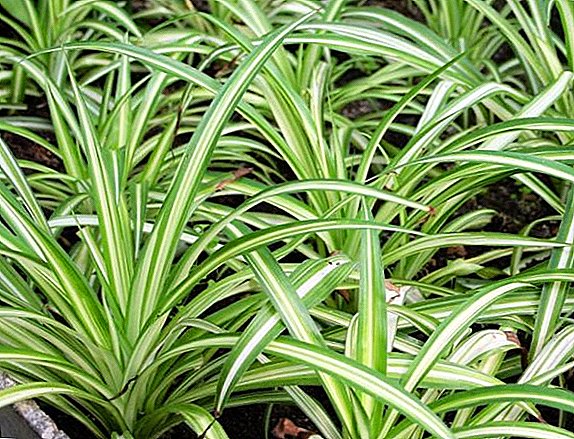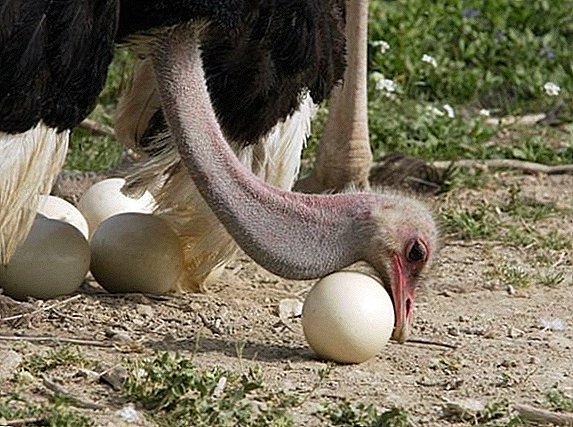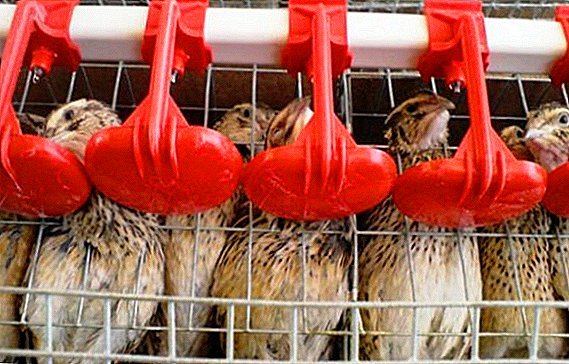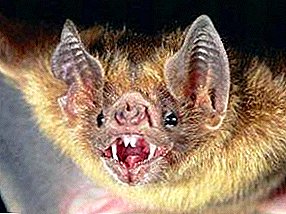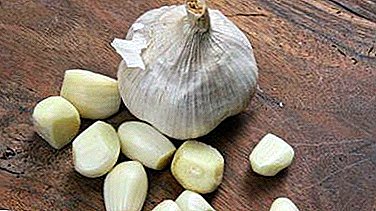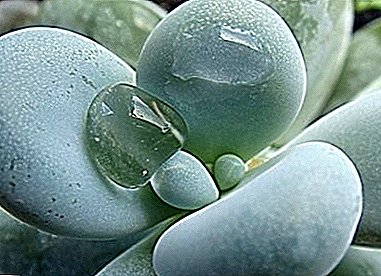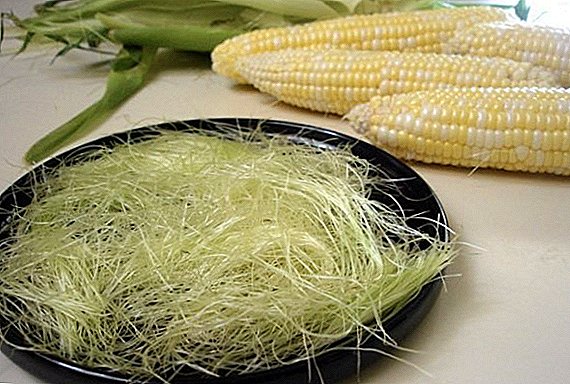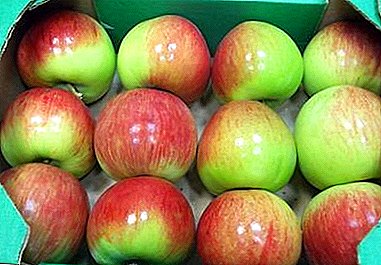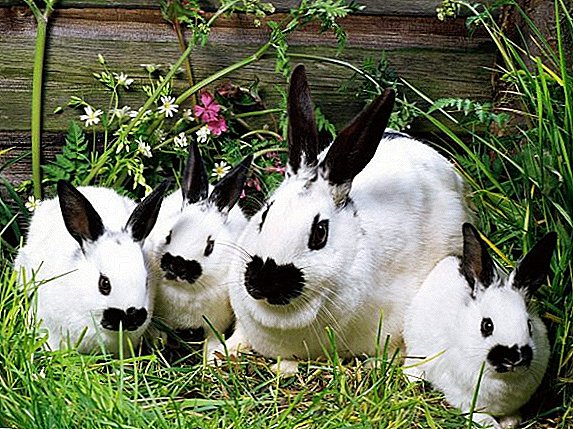 In order for the rabbits to have good health, fully develop and produce strong offspring, they need to provide comfortable living conditions. In the absence of such animals begin to undergo various diseases, in particular, diseases of the skin. How to prevent skin ailments and how to treat the most common ones, let's see.
In order for the rabbits to have good health, fully develop and produce strong offspring, they need to provide comfortable living conditions. In the absence of such animals begin to undergo various diseases, in particular, diseases of the skin. How to prevent skin ailments and how to treat the most common ones, let's see.
Danger of skin diseases
Loss of hair in rabbits is a completely natural phenomenon, indicating the beginning of seasonal molting. However, if the animal begins to lose hair heavily, noticeable patches of baldness, peeling and redness appear on the skin, this may indicate the development of serious health problems.
Read how to treat Pododermatitis, flatulence, viral hemorrhagic disease, conjunctivitis, pasteurellosis and scabies in rabbits.
The danger of skin diseases is great for both the animals and breeders, as some of the diseases can be transmitted to humans. With similar illnesses, rabbits due to high intoxication can lose weight, they do not eat well, they behave sluggishly.  They have reduced immunity, as a result of which their health is being attacked by new viruses and infections. Skin diseases can not be ignored, because they quickly spread to healthy individuals and can cause intoxication, depletion of the body and even the death of a whole herd of rabbits.
They have reduced immunity, as a result of which their health is being attacked by new viruses and infections. Skin diseases can not be ignored, because they quickly spread to healthy individuals and can cause intoxication, depletion of the body and even the death of a whole herd of rabbits.
Rabbit skin diseases: photo and description
Unfortunately, rabbits are prone to frequent diseases, including skin ones. Therefore, the task of each breeder is to regularly conduct a visual inspection of the animal and pay attention to the slightest changes in the behavior of pets. Among all skin ailments, the most common are several. Let's look at the types of diseases, their symptoms and effective treatment methods.
Eczema
Eczema is an inflammation that develops on the skin of a rabbit. The disease is non-infectious and occurs as a result of a reaction to chemical exposure, disorders of the digestive system, diseases of internal organs, the presence of worms and parasites or against the background of an allergic reaction to food or by rubbing the skin on the cell rods.  Symptoms eczema is quite characteristic:
Symptoms eczema is quite characteristic:
- scales, papules, blisters or pustules appear on the skin;
- redness and inflammation of the skin;
- severe itching and scabies in places of redness.
Learn how to properly apply Rabbiwak V and Associated Vaccine to rabbits.
There are five stages of eczema, where from the first to the last runs from two to four weeks:
- erythematous: redness and slight swelling appear on the animal's skin;
- papular: characterized by the formation of papules in the form of seals, which so far do not bring any concern;
- vesicular: papules are filled with fluid, begin to ache when pressed;
- erosive: bubbles of liquid gradually begin to erupt, while forming erosion - wounds that cause severe itching;
- crusted: purulent wounds begin to heal, forming crusts from above, which subsequently fall off. This is followed by a pet's recovery.
 Treatment. As drugs for the treatment of disease, antimicrobial and healing ointments, which are applied to the affected areas, have a high efficiency. Among the folk remedies suitable turpentine, ointment based on copper sulfate, various compresses of lectrav: chamomile, nettle, sage.
Treatment. As drugs for the treatment of disease, antimicrobial and healing ointments, which are applied to the affected areas, have a high efficiency. Among the folk remedies suitable turpentine, ointment based on copper sulfate, various compresses of lectrav: chamomile, nettle, sage.Important! If the disease is allowed to go "spontaneously" and not treated, it can turn into a chronic form that requires constant monitoring. Chronic eczema can not be treated and will manifest throughout life.
Dermatitis
Tangible discomfort to the rabbit can bring such a disease as dermatitis - inflammation of the skin without the formation of rash, papules, vesicles, etc. The appearance of the disease is associated with poor conditions of animals, violation of sanitary standards. In addition, the reasons for the appearance can be:
- mechanical stimuli - abrasions, wounds, attritions;
- exposure to chemicals: feces, urine, lime, various medications;
- thermal factors: burns, frostbite;
- infectious factors.
 Symptoms At the initial stage, the disease manifests itself on the paws of the animal: peeling, cracks are formed on them, which later turn into corns. If the rabbit is not treated, then as a result of infection, it will begin to lose wool, weeping ulcers appear, and the state of health worsens, which can be fatal.
Symptoms At the initial stage, the disease manifests itself on the paws of the animal: peeling, cracks are formed on them, which later turn into corns. If the rabbit is not treated, then as a result of infection, it will begin to lose wool, weeping ulcers appear, and the state of health worsens, which can be fatal.However, timely treatment will help to quickly cope with the disease and save the life of a pet.
Did you know? In rabbits, sweat is released only through the pads on their paws, it is very important to monitor their condition and prevent the formation of wounds, suppurations, etc. In addition, animals can die as a result of heat stroke, so they should be kept away from direct sunlight.
Treatment based on the use of special preparations and lotions. First, wounds on the skin are cleaned of pus and disinfected with iodine or hydrogen peroxide. Next, apply dressings with Vishnevsky's ointment or special vetsrams, and also make lotions from decoctions of medicinal herbs.  Prophylaxis the disease serves, first of all, the elimination of the cause, regular disinfection of the dwelling housing, cleaning of feces and debris causing the development of pathogenic microorganisms.
Prophylaxis the disease serves, first of all, the elimination of the cause, regular disinfection of the dwelling housing, cleaning of feces and debris causing the development of pathogenic microorganisms.
Furunculosis
Furunculosis is the most common disease in rabbits. It affects hairless skin. Most often, the disease is caused by skin lesions as a result of metabolic disorders or an excess of vitamins in the body.
Treatment. It is very important to start in due time, since during severe stages it is almost impossible to cope with the disease. Boils that occur on the skin in the form of purulent-necrotic cone-like rather large swellings are removed by surgery, and then the affected areas are treated with disinfectants, dressings with ointments.  If during the illness the inflammatory process has developed, then antibacterial agents and vitamin complexes are prescribed.
If during the illness the inflammatory process has developed, then antibacterial agents and vitamin complexes are prescribed.
For prophylaxis ailments use various multivitamin preparations, and also treat wounds with disinfectants, for example, tar soap.
We recommend to consider the types of diseases in ornamental rabbits and methods of their treatment, as well as find out what diseases of rabbits pose a threat to human health.
Abscess
As a result of acute inflammations that are caused by various pathogenic organisms - staphylococci, streptococci, pyogenic microbes, an abscess may occur in rabbits.
Symptoms The onset of the disease can be recognized by the occurrence of hemispherical hot-to-touch edema, limited to a testa-like consistency. Under the arms, the formation oscillates and shakes, while the animal behaves sluggishly, its body temperature rises.  As a rule, external abscesses appear after damage to mucous membranes as a result of bruises, friction, injury or bites. However, as noted by breeders, the greatest number of purulent cavities occurs due to the action of staphylococcal colonies.
As a rule, external abscesses appear after damage to mucous membranes as a result of bruises, friction, injury or bites. However, as noted by breeders, the greatest number of purulent cavities occurs due to the action of staphylococcal colonies.
In the initial stages treatment use warm compresses, lotions, hot-water bottles.
Learn more about how to treat an abscess in rabbits.
Subsequent therapy consists in the use of antibiotics, which are prescribed after surgical opening of abscesses. The affected cavity is treated with antiseptics, for example, a solution of potassium permanganate or furatsilina.
Video: Rabbit abscess treatment
Phlegmon
Cellulitis is a pervasive, acute purulent, sometimes putrid inflammation of friable fiber, in which necrotic phenomena are observed over suppuratives. Causes of the disease are infections of abscesses, boils, or other purulent lesions in the tissue.
The most favorable factor in the development of the disease is tissue damage or the presence of bruises.
Symptoms phlegmon are:
- extensive swelling in the area of suppuration;
- severe pain;
- increase in body temperature up to 40 degrees;
- animal deterioration: loss of appetite, depressed behavior.
 Depressed behavior in a rabbit is one of the symptoms of cellulitis Primary treatment comes down to the use of thermal procedures: warming compresses, heating pads, lotions. At the same time, anti-septic agents are prescribed, for example, antibiotics. In the case of severe disease, they practice surgery.
Depressed behavior in a rabbit is one of the symptoms of cellulitis Primary treatment comes down to the use of thermal procedures: warming compresses, heating pads, lotions. At the same time, anti-septic agents are prescribed, for example, antibiotics. In the case of severe disease, they practice surgery.Did you know? It has long been believed that rabbits are the most fearful creatures. And this is true, because predators are able to scare an animal to death in a literal sense. The heartbeat of a pet per minute can reach from 130 to 325 beats per minute.As preventive measures they treat the skin with tar soap and also enrich the nutrition of the animal with vitamin-mineral complexes.

Burns
Often, as a result of high temperatures, various chemical agents, current or radiation energy, animals may experience burns of varying degrees:
- I degree: small swelling of the skin, shallow superficial burns of the upper layer of the skin;
- II degree: damage to the entire layer of the epidermis with the formation of bubbles, in which there is a transparent, slightly yellowish liquid;
- III degree: damage to the entire thickness of the skin, along with sweat, sebaceous glands. During this period, the skin becomes cold, and in places of burns - very dense;
- IV degree: affected areas are charred and transformed into a dark mass.
With the defeat of more than 10% of the skin, a burn disease occurs.
Treatment. Thermal burns are treated by imposing on the wounds of a tissue bandage, moistened with a solution of special coagulating agents, Vishnevsky ointments, Levomekol, antibiotic creams.  Treatment of burns resulting from exposure to chemicals is carried out with various acids, depending on the type:
Treatment of burns resulting from exposure to chemicals is carried out with various acids, depending on the type:
- acid action is neutralized with ordinary raw milk or 5% sodium bicarbonate solution;
- alkalis can be neutralized with a 2% solution of acetic acid;
- Cyano compounds are treated with potassium permanganate solution.
As a result of the contact of the rabbit with the electrical wires, electric shock may occur, which is characterized by a rather serious condition of the animal: the pet is constantly lying, there is a rare pulse and weak, intermittent breathing.  In such cases, the life of the animal is saved with the help of cardiac stimulant drugs, anticonvulsant drugs and means to reduce intracranial pressure.
In such cases, the life of the animal is saved with the help of cardiac stimulant drugs, anticonvulsant drugs and means to reduce intracranial pressure.
Frostbite
If the animal stays for a long time in adverse conditions with low air temperature or prolonged contact with cold surfaces (for example, sex), the animal may develop a serious illness - frostbite. Most often exposed areas are exposed to freezing: nose, ears, limbs, tail.
Symptoms At the first signs of frostbite (I degree) there is a pale tissue, loss of sensitivity, and a slight swelling of the skin. II degree of frostbite is characterized by the formation of blisters, in the middle of which there is a pink-reddish liquid. Subsequently, the skin becomes painful, cold and hard, gradually dying off (Grade III).  Treatment frostbite lasts a long time. It is aimed at restoring the microcirculation of the blood, conducting a warming massage, rubbing the affected areas with camphor alcohol, fat, etc. Next, the wounds are treated with green or iododerin, top dressings with camphor or zinc ointment are applied.
Treatment frostbite lasts a long time. It is aimed at restoring the microcirculation of the blood, conducting a warming massage, rubbing the affected areas with camphor alcohol, fat, etc. Next, the wounds are treated with green or iododerin, top dressings with camphor or zinc ointment are applied.
Bubbles, which appeared as a result of frostbite, gently open and inject a solution of antibiotics into them.
Disease prevention
The majority of all skin ailments in rabbits are caused by the pathogenic action of microorganisms, infections or fungi, which is why it is very important to monitor the cleanliness of the cells where the rabbits live, to regularly disinfect and not to allow contact with an infected animal.
Agree, the best prevention of rabbit diseases is timely cell disinfection.
As a preventive measure plays an important role:
- complete, balanced pet food, in which they receive all the necessary nutrients that strengthen the immune system and increase the protective functions of the body;
- timely vaccination - one of the most simple and reliable methods to protect the rabbit from infectious diseases;
- systematic examination of the animal. Such visual analysis will allow to recognize the disease in time and proceed to its treatment as soon as possible;
- isolation of diseased individuals. At the first suspicion of any disease of an infected rabbit, it should be removed from the cage and placed in a separate place where the treatment will be carried out.
 Balanced nutrition prevents skin diseases in rabbits. In no case can we ignore skin diseases in rabbits, because even minor damage to the skin can trigger the development of severe ailments that can result in the death of a pet.
Balanced nutrition prevents skin diseases in rabbits. In no case can we ignore skin diseases in rabbits, because even minor damage to the skin can trigger the development of severe ailments that can result in the death of a pet.Proper nutrition for rabbits is necessary. We advise you to find out when and how to feed eared animals at home, as well as consider the feeding habits of rabbits in winter.
It is not necessary to self-medicate; in order to make a correct diagnosis, it is necessary to show the animal to the doctor and get qualified recommendations regarding the treatment regimen, its duration and drug therapy.


